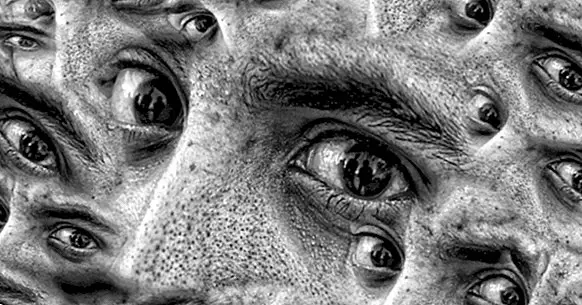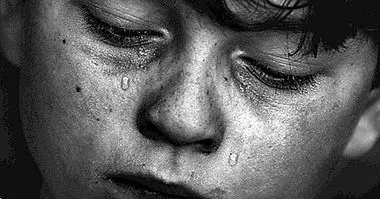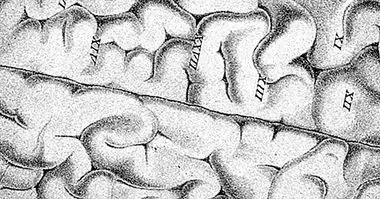Obsessive-Compulsive Disorder (OCD): what is it and how does it manifest?
Not all mental disorders are based on an abnormal perception of reality. Some, like the Obsessive-compulsive disorder (OCD) , are not expressed through the way in which the information coming from the surrounding world is interpreted, but through actions that arise from the subject itself: the calls repetitive behavior , or compulsions , which undermine the quality of life of people by producing unpleasant sensations and limiting their degree of freedom.
However, talking about this type of behavior is only one half of the story. The other half is found in intrusive thoughts, which are closely linked with compulsions . From a psychological perspective, it can be said that both intrusive thoughts (or obsessions) and compulsions are the two main gears through which obsessive-compulsive disorder is articulated. But ... how do these two pieces come to be activated?
Obsessive-compulsive disorder: intrusive thoughts and compulsions
Obsessive-compulsive disorder is a anxiety disorder , and therefore is characterized by being associated with feelings of fear, anguish and continued stress in a magnitude that is a problem for the day to day and has a negative impact on the quality of life of the person in practically all the areas in which it is developing.
In the specific case of obsessive-compulsive disorder, the engine of these anxiety crises is the cycle obsession-compulsion . Obsessions occur spontaneously, regardless of the person's will, and they become so frequent that they become invasive. In addition to creating anguish, these intrusive thoughts trigger a series of repetitive behaviors aimed at reducing anxiety produced by obsessions.

OCD is also characterized by repetitive behaviors
However, far from being useful repetitive behaviors are actually compulsions, that is, stereotyped behaviors beyond the control of the person , like the thoughts whose negative effects try to mitigate. That is why the diagnostic picture of obsessive-compulsive disorder not only includes intrusive thoughts, but also the stereotyped actions that follow them.
By dint of repetition, both obsessions and compulsions come to take control of the person's life, just as the pathological game takes over the daily life of the gambler. The obsession-compulsion cycle causes anxiety to persist, since the person experiencing obsessive-compulsive disorder anticipates the appearance of intrusive thoughts and stereotyped behaviors and knows that they escape their will. In this way, it is entering a loop of action and reaction that is increasingly difficult to undo.
The most frequent compulsions in OCD
The compulsions associated with OCD cover a range of possibilities that are practically infinite and immeasurable , and also its variety grows as technological changes are introduced into our lives.
However, there are certain compulsions that are much more common than others. What are the most frequent behaviors among those who suffer from this disorder?
1. Need to clean
These compulsions tend to be related to obsessions that have something to do with the idea of dirt or putrefaction, literal or metaphorical. People with this type of compulsions can clean their hands too often , or do the same with objects or other parts of the body. Everything is part of a desperate and urgent attempt to get rid of the dirt that invades what should be pure.
- Know more: "Obsession with cleanliness, causes and symptoms"
2. Need to order
For some reason, the person who presents this type of compulsion of obsessive-compulsive disorder you have the impression that you need to order several items , either by the intrinsic value of being in a place with things well collected or to make a good impression. This type of compulsion has been linked to the classic laws of Gestalt, since according to this psychological current we notice a feeling of tension or a slight discomfort if what we perceive does not form a well-defined and well-defined set. In this sense, a disordered environment would create discomfort when presenting difficulties to be perceived as a perfectly defined whole: a study room, a dining room, etc.
Thus, the obsessive-compulsive disorder would occur when this feeling of discomfort is amplified so much that it harms the levels of well-being and quality of life of the person, forcing her to order so as not to feel bad.
3. Compulsions related to the accumulation
In this type of obsessive-compulsive disorder, the person has the need to keep all kinds of elements according to their possible use in the future , despite the fact that it is highly unlikely, due to statistics, that a situation will be experienced in which each of the accumulated things will be able to be used.
From some schools of the psychodynamic currents, such as classical Freudian psychoanalysis, this tends to be related to Freud's psychosexual theory. However, the current clinical psychology starts with budgets and a philosophy of research and intervention that have nothing to do with psychoanalysis.
4- Checking compulsions
Another typical example of obsessive-compulsive disorder is that of a person who you need to constantly make sure that everything works as it should to the point of getting to do the same thing several times each day. It is a case of verification compulsion, based on the need to avoid future accidents and, more specifically, to make the imaginary thoughts and scenes about the accidents that could occur stop altogether and stop producing discomfort. These thoughts appear involuntarily and lead to several checks aimed at reducing the risk of their occurrence, which in turn becomes a difficult habit to change.
Causes of obsessive-compulsive disorder
As it happens in many psychiatric syndromes, Little is known about the precise biological mechanisms by which some people have obsessive-compulsive disorder . It is not surprising because to address it, in addition to studying the complicated functioning of the human brain, it is necessary to address the context in which the person has developed, their habits and living conditions, etc. In short, we must understand OCD from a biopsychosocial perspective.
In manuals such as DSM-IV the set of symptoms that characterize this anxiety disorder are described, but beyond the diagnostic criteria there is no theoretical model supported by a broad scientific consensus that explains its causes in a good level of detail. New research in neuroscience, together with the use of new technologies to study the functioning of the brain, will be crucial to find out what are the causes of OCD.
Bibliographic references:
- Kaplan, Alicia; Hollander Eric. (2003). A Review of Pharmacologic Treatments for Obsessive Compulsive Disorder. psychiatryonline.org
- Sanjaya Saxena, MD; Arthur L. Brody, MD; Karron M. Maidment, RN; Hsiao-Ming Wu, PhD; Lewis R Baxter, Jr, M D (2001). Cerebral Metabolic in Major Depression and Obsessive-Compulsive Disorder Occurring Separately and Concurrently. Society of Biological Psychiatry.



















